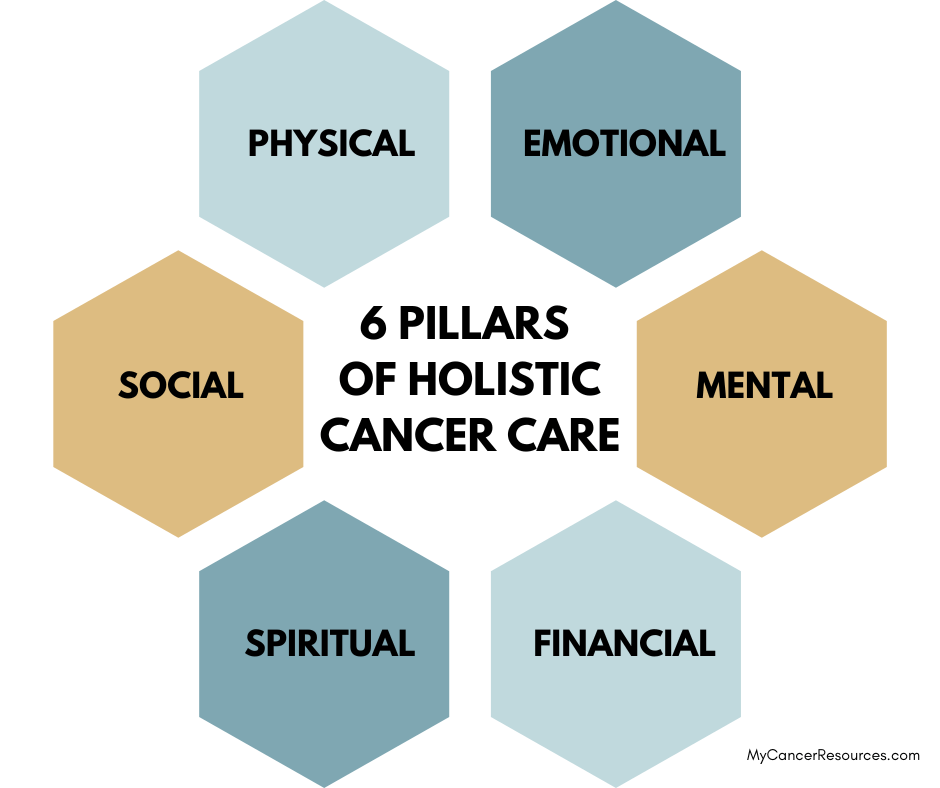Around the world, different months are designated to increase the public’s awareness of, raise money, promote regular screening and early detection for and celebrate research breakthroughs for various health conditions. Cancer is no different. There are many days, weeks, and months dedicated to specific cancer types.
On the date or during the week or month, activities and promotions are held by government agencies, non-governmental agencies such as the World Health Organization, nonprofit organizations such as the American Cancer Society or medical facilities and healthcare providers. These include public health campaigns, free or low-cost screening tests, and fundraising events. This post discusses different cancer awareness months, weeks and days in the United States. If there is an international awareness date, it is listed below as well.
All statistics below were gathered from the American Cancer Society.
January
National Cervical Cancer Awareness Month: Cervical cancer is most often diagnosed in women between 35 and 44, but 20% of cases are found in women over the age of 65. Approximately 14,100 new cases of invasive cervical cancer are diagnosed each year. The Pap test has been instrumental in improving the survival rate of cervical cancer as it can find changes in the cervix before cancer develops and find cancer earlier, when it is easier to treat. Most cervical cancers are caused by human papillomavirus (HPV), and an HPV vaccine has been released to prevent some cancers caused by certain HPV strains.
Related: International HPV Awareness Day is on March 4th.
February
National Gallbladder and Bile Duct Cancer Awareness Month: The gallbladder is a small organ that is pear-shaped and sits under the liver. The gallbladder stores bile, a fluid made in the liver to digest fats in foods. Bile ducts are tubes that transport bile from the liver and gallbladder to the small intestine. Approximately 12,130 new cases of gallbladder cancer and bile duct cancer (also called cholangiocarcinoma) are diagnosed each year in the U.S.
National Cancer Prevention Month: Since about 40% of all cancers can be linked to preventable causes, such as smoking, excess body weight, excessive sun exposure and lack of physical activity, this month has many prevention events to educate about a person’s risk and offer support services, such as smoking cessation classes in order to reduce the likelihood of cancer developing.
March
Kidney Cancer Awareness Month: The kidneys are two bean-shaped organs on each side of the backbone. The kidneys remove extra salt, water and waste from blood and turn it into urine. The kidneys also make a hormone called erythropoietin, which tells the bone marrow to make more red blood cells. This hormone may sound familiar, as many people with cancer are given EPO shots (erythropoietin made in a lab) to treat anemia (low red blood cell count) brought on by certain tumors or chemotherapy.
There are many types of kidney (also called renal) cancer. There are about 79,000 new cases diagnosed in the United States each year, with most people being diagnosed between ages 65 and 74. Kidney cancer occurs about twice as often in men as it does in women.
Related: World Kidney Cancer Day is June 16th.
Myeloma Awareness Month: Multiple Myeloma is cancer of the plasma cells. This cancer is diagnosed in about 34,470 people each year in the U.S.
National Colorectal Cancer Awareness Month: Colorectal cancers are cancer of the colon and rectum. The colon is the long tube that connects the small intestine to the rectum and processes food, absorbing water and salt and sending the remaining waste to the rectum. Rectal cancer is cancer that develops in the rectum. Most colorectal cancers start as a growth, called a polyp on the inner lining of the colon or rectum.
Colorectal cancers are the third most common cancer (excluding skin cancers) diagnosed in the United States. Here, approximately 106,180 new cases of colon cancer and 44,850 new cases of rectal cancer are diagnosed each year.
Anal Cancer Awareness Day is held on March 21st. This fairly rare cancer is diagnosed in about 9,440 people each year, with around twice as many women diagnosed as men. Anal cancer is most often found in adults aged 60+.
Triple-Negative Breast Cancer Day is on 3/3. Also called TNBC, triple-negative breast cancer tends to grow and spread faster than other breast cancers. This is because TNBC cancer cells don’t have estrogen or progesterone receptors, and makes little to no HER2 protein. The cancer cells test ‘negative’ on all three of the tests. Most breast cancer treatment options target those receptors or the HER2 protein. Since TNBC cells do not have any of the above, fewer treatment options are available. TNBC is most common in women under the age of 40 and black women, with many having the BRCA1 mutation. Approximately 10-15% of all breast cancers are TNBC.
April
April is National Cancer Control Month, which has been celebrated since 1938. Signature events raise awareness for cancer prevention and treatment in the United States. Education is a large part of these activities, educating the public on risk factors, the importance of screening and how diagnosing cancer in its early stages leads to more treatment options and better outcomes.
Testicular Cancer Awareness Month: Testicular cancer is not common, with 1 in every 250 males developing the disease, so around 9,910 new cases each year. The average age at diagnosis is 33. Six percent of cases occur in children and teens, and 8% of cases are in men over 55.
Esophageal Cancer Awareness Month: The esophagus is the tube connecting the throat and the stomach. When you swallow, food and liquids pass through the esophagus to the stomach. Esophageal cancer is more common in men than in women. Around 20,640 new cases are diagnosed each year in the United States.
Oral, Head & Neck Cancer Awareness Month: These cancers include Laryngeal (cancer of the voice box), Hypopharyngeal (lower throat cancer), oral (mouth), oropharyngeal (throat), nasopharyngeal (upper throat cancer), nasal cavity (nose) and paranasal sinuses (sinus cancer), and salivary gland cancer.
Approximately 54,000 cases of oral cavity or oropharyngeal cancer are diagnosed each year. There are 12,470 new laryngeal cancer cases each year. Nasal and paranasal cancers are rare, making up only 3-5% of all new head and neck cancer diagnoses. Nasopharyngeal cancer is extremely rare in the United States.
The first week of April is National Young Adult Cancer Awareness Week. This week highlights issues surrounding cancer in adolescents and young adults that range from 15-40 years of age.
The 3rd week of April is National Minority Cancer Awareness Week. There are drastic differences in the rates of cancer screening, prevention and treatment for various racial and ethnic groups. Minority groups also traditionally have more difficulties in accessing healthcare, have lower rates of being insured, and may experience discrimination in all levels of healthcare. For these reasons and more, cancer in minority populations are typically discovered later, at more advanced stages than white populations. This week helps target education, services and resources to minority populations.
April 1st is known as Kick Butts Day or Take Down Tobacco Day. This is a year-long campaign that culminates in a day of activism for youth that empowers them to stand out, speak up and seize control against Big Tobacco. The hope is that kids will become aware of the deceptive marketing tactics from Big Tobacco, and will remain tobacco free, which can help protect them from developing cancer in the future.
May
Bladder Cancer Awareness Month: Bladder cancer is the fourth most common cancer type found in men. It is much less common in women. Out of the estimated 81,180 new cases that are diagnosed each year in the United States, more than 75% are found in men.
Brain Tumor Awareness Month: Tumors that develop in the brain rarely metastasize (spread) to other organs, but cancer cells from other parts of the body can spread into the brain and develop tumors there. Brain tumors that are benign (non-cancerous) are much more common than the 25,050 malignant primary (meaning they start in the brain) tumors that are diagnosed each year. Brain and spinal cord tumors are the second most common type of cancer found in children.
Related: Glioblastoma Awareness Day is on July 22nd.
Melanoma & Skin Cancer Detection and Prevention Month: Melanoma is a type of skin cancer that can spread more rapidly than other types of skin cancer, so it is important to discover melanoma early. This month centers on educating the public on how to protect the skin from harmful UV rays and teaching them what different types of skin cancers look like. Encouraging people to perform self-checks and regularly see a dermatologist for any concerning spots can help catch skin cancer early, when it is easier to treat.
Related: Melanoma Monday is always recognized on the first Monday in May.
National Cancer Research Month celebrates the advances that have come from cancer research, all the way from initial studies in labs to complete clinical trials that have led to the approval of many cancer-treating drugs and interventions. Events highlight the importance of lifesaving cancer research and encourage people to enter the field to help further these developments.
Related: World Cancer Research Day is 9/24
June
Cancer Immunotherapy Awareness Month: Immunotherapy is a type of cancer treatment that activates one’s immune system to boost their body’s ability to fight their cancer.
National Black Family Cancer Awareness Week runs from 6/15 – 6/21, 2023. This is a massive week-long social media campaign (in addition to other events throughout the year) intended to increase cancer awareness in black families and to encourage their participation in clinical trials.
National Cancer Survivor’s Day is held on the first Sunday in June, and celebrates and honors those living with a history of cancer. In the United States, there are currently over 18 million cancer survivors.
July
Sarcoma and Bone Cancer Awareness Month: Sarcomas are a type of cancer that develops in tissues like bone or muscle, and can be found in any part of the body. Soft tissue sarcomas can develop in muscles, fat, nerves and blood vessels, and often start in the arms or legs. Approximately 13,190 new cases of soft tissue sarcomas are diagnosed each year.
Sarcomas that start in the bones are called osteosarcomas. Osteosarcomas are quite rare. They develop at any age, but are most often found in teens. Only about 1000 new cases are diagnosed each year in the U.S., and about half of these cases are in children and teens.
Gastrointestinal Stromal Tumor (GIST) Awareness Day is held on July 13th. GISTs start in cells in the wall of the gastrointestinal (GI) tract. Most occur in the stomach or small intestine. There are an estimated 5,000 new diagnoses each year, and GISTs are most commonly found in people over 50.
September
Childhood Cancer Awareness Month: Approximately 10,470 children in the U.S. under 15 years old are diagnosed with some type of cancer each year. Children’s treatments have become much more successful in recent years, but pediatric cancer survivors often deal with long-term side effects that can last the rest of their lives. Community events remember those who have passed away, celebrate with the survivors, raise awareness of what it is like to deal with cancer as a young child, and advocate to fund research that will cure even more kids, without the lasting complications.
Related: International Childhood Cancer Day is February 15th.
Ovarian Cancer Awareness Month: Ovarian tumors can be epithelial, germ cell, or stromal tumors. Ovarian cancer is most prominent in white women over the age of 60, but can affect women of all ages. Approximately 19,880 new diagnoses of ovarian cancer are made each year. Unfortunately, ovarian cancer ranks fifth in all cancer deaths among women.
Related: World Ovarian Cancer Day is May 8th.
Uterine Cancer Awareness Month: Uterine cancer is the most common cancer of the female reproductive organs. Around 65,590 new cases are diagnosed each year.
National Prostate Cancer Awareness Month: Prostate is the most common cancer in men behind skin cancer. Around 268,490 men will be diagnosed with prostate cancer each year. Sixty percent of cases are in men aged 65 or older. This disease is rare in men under 40 years of age.
Blood Cancer Awareness Month: Blood cancers affect blood cells and bone marrow (the tissue inside the bones that produce blood cells). Most blood cancers are leukemias, lymphomas or myelomas.
Related: Leukemia and Lymphoma Awareness Month: There are different types of leukemia, depending on the type of white blood cell it affects and if it grows fast or slow. Acute Lymphocytic Leukemia (ALL) is the most common type of childhood cancer, most often affecting children between 3 and 5. In adults, 60,650 will have a leukemia cancer diagnosis each year.
Lymphoma is cancer of the lymph system, which is a series of vessels that store and transport white blood cells throughout your body to fight infection. The most common lymphomas are Hodgkin lymphoma and non-Hodgkin lymphoma. Hodgkin lymphoma will affect 8,540 new people each year. Non-Hodgkin lymphoma is one of the most common cancers in the U.S., affecting 80,470 new people each year.
Related: World Lymphoma Awareness Day is held on 9/15.
National Marrow Awareness Month: recognizes those who donate their stem cells and bone marrow that can be used to treat leukemias, lymphomas, and some solid tumors. It also acknowledges the achievements of transplant physicians.
Thyroid Cancer Awareness Month: The thyroid is a butterfly-shaped gland at the front part of the neck. It makes hormones that help regulate a number of bodily functions. This type of cancer will be diagnosed in around 43,800 people each year. It is much more common in women than in men.
The last week of September is designated as National Hereditary Breast and Ovarian Cancer Week. This recognizes and honors those that have a genetic mutation that increases their cancer risk, such as BRCA1 or BRCA 2.
Related: National Previvor Day is the last Wednesday of September. This day educates those who have a family history of cancer about genetic testing to determine if they are at higher risk of developing cancer in the future.
October
National Breast Cancer Awareness Month: There are many different types of breast cancer, depending on where in the breast the cancer started. Behind skin cancer, breast cancer is the most common cancer in women in the U.S., and accounts for 30% of all new female cancers every year. This year, 339,250 women will receive some sort of breast cancer diagnosis.
Related: Male Breast Cancer Awareness Week is the 3rd week of October. Though much less common, men can develop breast cancer too. Each year, around 2,710 men will be diagnosed with breast cancer.
Related: National Mammography Day is the 3rd Friday of October
Related: Metastatic Breast Cancer Awareness Day is on October 13th.
National Liver Cancer Awareness Month: The liver is the organ responsible for many functions, including cleaning the blood of toxins, and storing nutrients absorbed from the intestine. Around 41,260 new cases are diagnosed each year, with twice as many men diagnosed with liver cancer as women.
November
National Lung Cancer Awareness Month: Lung cancers are classified as small cell or non-small cell. Excluding skin cancers, lung cancer is the second most common cancer. The rates of new cases are pretty evenly divided between men and women. Each year, around 236,740 people are diagnosed with lung cancer.
This cancer typically occurs in those aged 65 and older. Lung cancer is the leading cause of cancer death. Every year, more people die of lung cancer than colon, prostate and breast cancers combined.
Activities for lung cancer awareness month educate people on the dangers of smoking, offer smoking cessation programs, and raise money to continue researching treatment options for lung cancer patients.
Related: World Lung Cancer Day is celebrated on August 1st each year.
Related: The Great American Smokeout is held on the third Thursday of November. This challenges smokers to give up smoking for 24 hours, in hopes that it’ll be their first step to quitting smoking for good.
National Carcinoid Cancer Month: Carcinoid tumors are slow-growing, rare cancers that are a type of neuroendocrine tumor that begin in the cells of the nervous system or hormonal system. More women develop carcinoid tumors than men do, and most patients are over age 60. Around 12,000 people are diagnosed each year in the U.S. with carcinoid tumors.
Related: Worldwide Neuroendocrine Cancer Awareness Day November 10th
National Pancreatic Cancer Awareness Month: The pancreas creates enzymes (juices) that help break down foods. Pancreatic cancer can either be pancreatic adenocarcinoma or pancreatic neuroendocrine tumors. Around 62,210 people are diagnosed in the United States with pancreatic cancer each hear.
Related: World Pancreatic Cancer Day is recognized on the third Thursday of November.
Stomach Cancer / Gastric Cancer Awareness Month : Stomach cancer is also called gastric cancer. This type of cancer is slow growing, but pre-cancerous changes happen in the inner lining of the stomach. But since these changes rarely cause symptoms, stomach cancer can go undetected for a long time. Stomach cancer is diagnosed in about 26,380 people each year.
National Family Caregivers Month: Recognizes and honors family caregivers. It raises awareness about caregiving issues while offering caregivers the opportunity to share their stories and in turn, increase support for family caregivers.




